




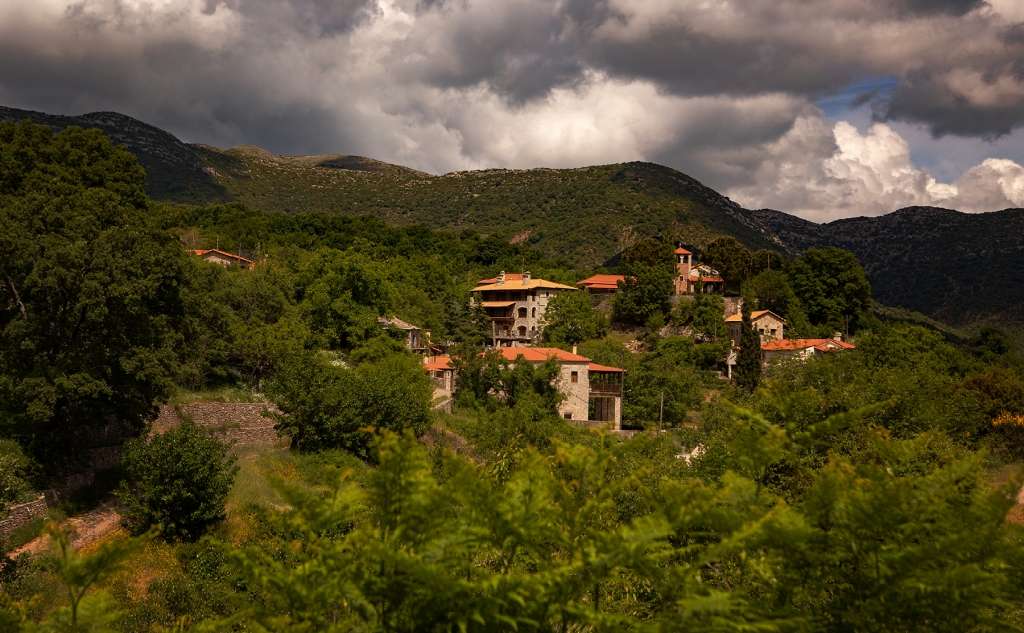
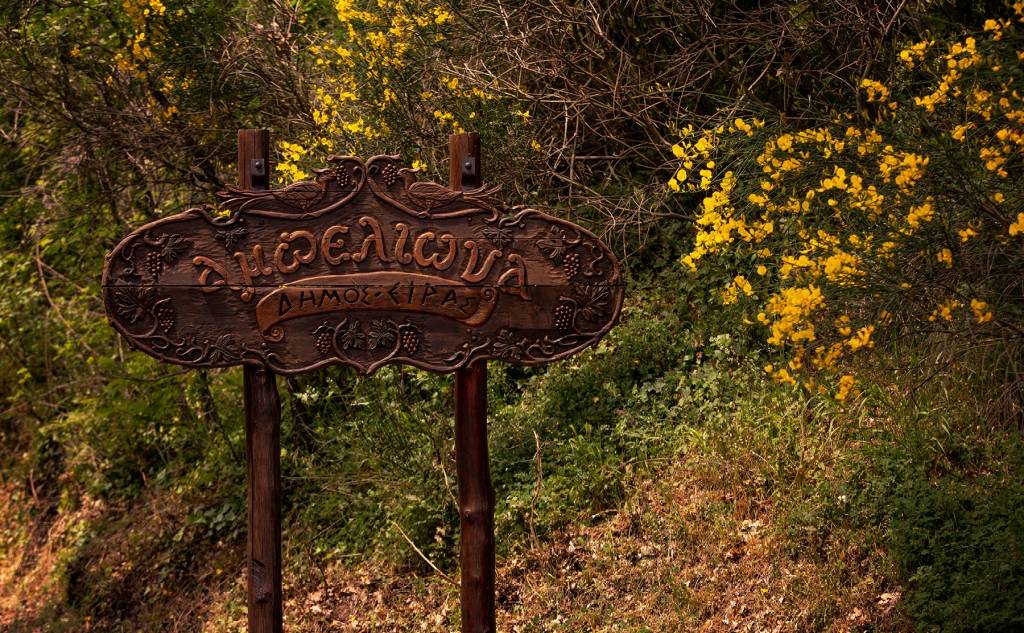
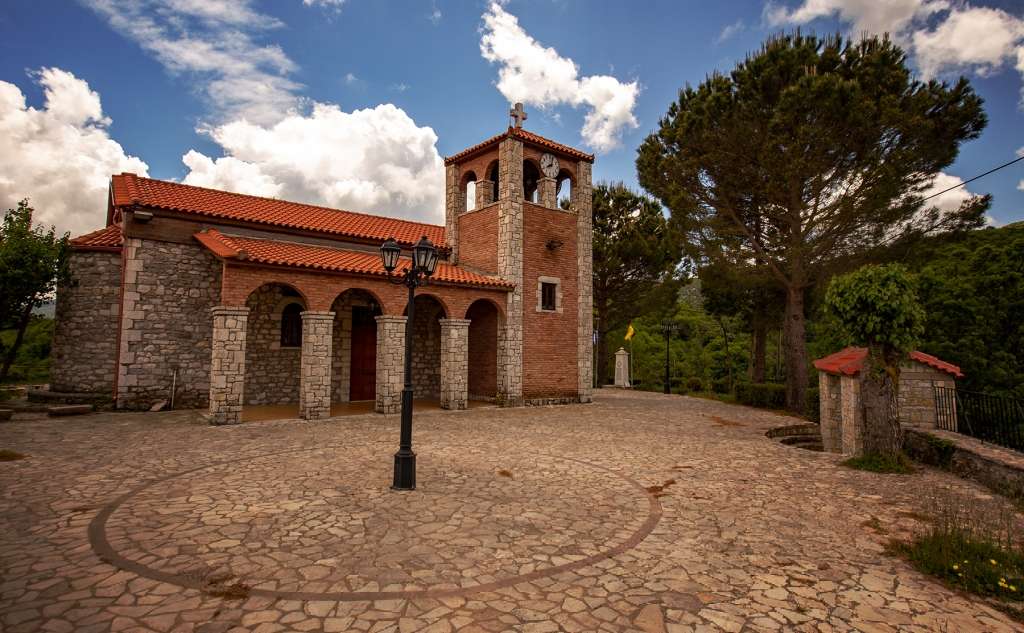

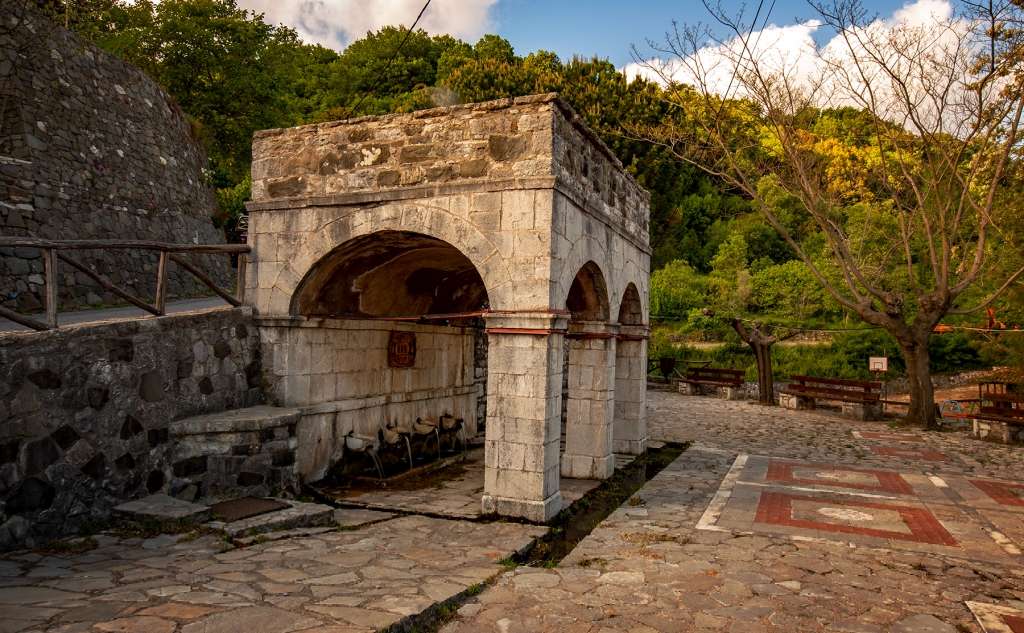
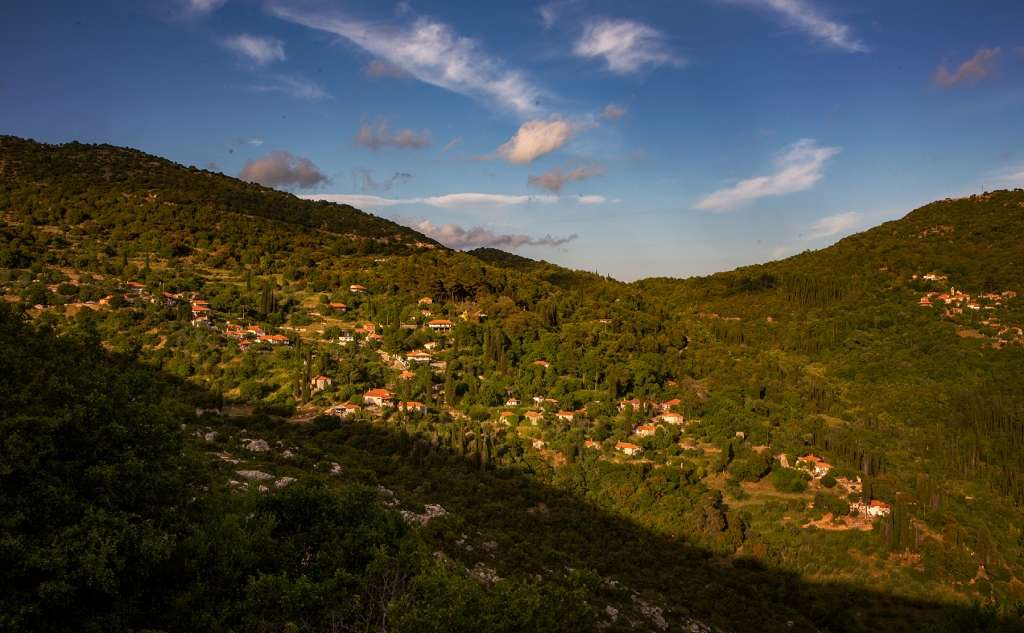
The small, mountainous village of Ampeliona is amphitheatrically built (at an altitude of 840 metres) in a verdant natural environment. Specifically, it is located west of Mount Lykaio, at the imaginary crossroads of Messenia, Ilia and Arcadia prefectures. It is 78 kilometres from Kalamata, while a stone's throw from the village, the visitor can see a chestnut forest - the only protected one in the Western Peloponnese. As the older people of the village say, chestnut trees were planted in the area during the Frankish period. The village takes its name from the many vines grown by the residents here.
In Ampeliona, visitors can wander through the cobbled streets with traditional stone houses and fountains. In the central square is the "Trani Fountain" with its four faucets and elaborate marble construction of domes, arches and columns, which has been classified as a preserved construction by the Ministry of Culture. In the same square, the well-preserved, stone-built old Primary School, donated by national benefactor Andreas Syggros, which has been turned into a traditional guest house, dominates the area.
The stone-built church of Agios Nikolaos dominates the hill in the centre of the village, while southeast of the village are the chapels of Prophet Ilias and Agia Paraskevi. Also, in a green ravine is the "Trichelli" spring, which is accessible via a paved path.
Ambeliona is the birthplace of late director Theodoros Aggelopoulos (1935-2012). In fact, his family, with personal care, has formed a network of paths, the "Apollo Trails", to highlight the area's history, culture and natural beauty. From the village, visitors can easily reach the Neda gorge and the ravine of Vyros. At the same time, nearby is the chapel of Agia Theodora (with the 17 large trees on the roof) and the temple of Epicurious Apollo - one of the most important monuments of Greece.
Finally, every year, on the last Sunday of October, the village organises the "Chestnut Festival" with local recipes, tsipouro and traditional dishes accompanied by live music. The celebration takes place in the courtyard of the "Theodoros Aggelopoulos" Cultural Centre, which until the 1960s was a gendarmerie station.